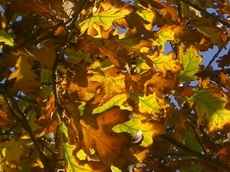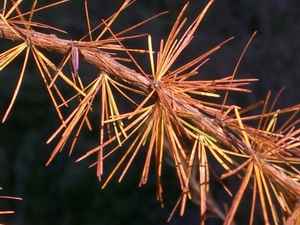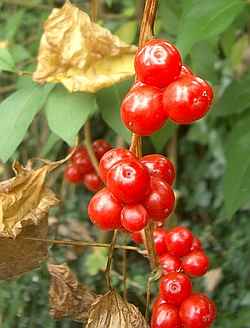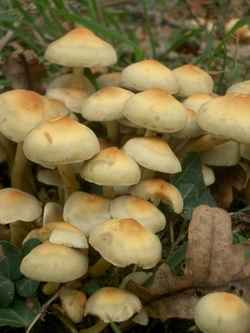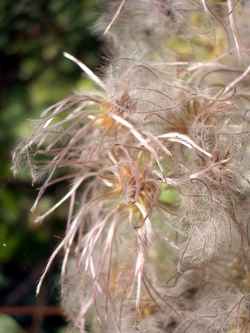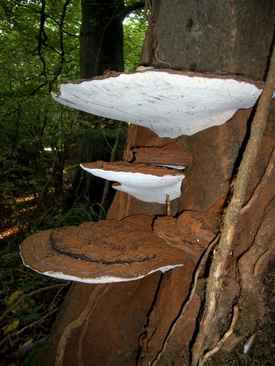When to Watch Wildlife |
J | F | M | A | M | J | J | A | S | O | N | D | Search |
Current wildlife highlights |
||
|
What's new on this site |
||
|
Wildlife calendar |
||
|
Plants and Animals |
||
|
Habitats |
||
|
Wildlife sites |
||
|
WWW links |
||
|
Guide Books |
||
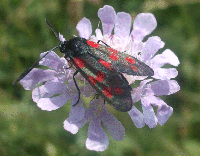 |
||
|
© PMcS 2011 |
|
November |
|||||||||||||
|
|||||||||||||
|
|||||||||||||
| Habitats and species |
|||||||||||||
|
Parks and gardens:
Clean out nest boxes now, to rid them of parasites and old nesting
material. However, place some sort of natural lining back in them
(such as wool, hay etc.) to provide comfort for roosting birds. In
winter small birds will cluster together to help stave off the cold.
Nest boxes can provide ideal sites for this. Ensure that you are
providing hanging peanuts and scattered seeds for the different bird
visitors. Also a source of water is important. However if
you start feeding the birds it is important that you do not suddenly
stop, as our feathered friends can become reliant on your handouts
during harder times. |
|||||||||||||
Woodlands
(including wood pasture): In the woodlands the ground is
covered in fallen leaves which rustle under foot. Fungi are also
still appearing. Both edible and poisonous, but all fascinating.
The sulphur tuft fungus grows on rotting wood and is widespread.
|
|||||||||||||
Arable and
hedgerows: The old man's beard is now finally opening out its
fluffy seed heads. As leaves fall from the hedgerows it becomes
that much more obvious.
|
|||||||||||||
Road verges: By the end of the month only a few scattered flowers remain. Grasses are mainly dead stems and where there is bracken this is brown. |
|||||||||||||
|
Chalk and limestone grasslands: |
|||||||||||||
|
Meadows (neutral) and flood plain grasslands: |
|||||||||||||
|
Acidic grasslands: |
|||||||||||||
|
Heathlands: |
|||||||||||||
| Mountain and Moorlands (uplands): The breeding waders and summer migrants have left, leaving the uplands to the grouse, ptarmigan, red deer and mountain hares, where the ground is highest and countryside at its wildest. | |||||||||||||
Rivers and ponds (including bogs and mires): By November the wetland plants are starting to dieback and appear bedraggled. In the rivers the adult Atlantic salmon are migrating back to the place of their birth - the gravely shallows up stream. The fish arrive from the sea, entering the estuaries and then move on to the rivers. They swim against the current, driven to reach their final destination, where eggs are laid and fertilised (spawning), but where the adults will die, exhausted. During the journey, which will have taken many weeks, the males change both internally and externally. As the fish journey to their final destination they can be seen leaping out of the water to get over weirs and low waterfalls. This is a highlight well worth seeking out. |
|||||||||||||
|
Sea and the sea
shore (including estuaries): Estuaries are filling up with
more waders and wild fowl. Wigeon, teal, tufted
duck and shovelers are particularly abundant ducks.
The wigeon give the sound track to the spectacle with their high
pitched call, and are accompanied by the startled lapwing
'peewit'. |
|||||||||||||
|
Mammals: At this time bats enter a state of torpor in their
hibernacula. This is not a full hibernation as bats will emerge on
warm days, but is a state of reduced metabolism and body temperature.
In this state less energy is required. Only dormice and
hedgehogs hibernate. Some other mammals reduce winter
activity, such as the badger, but will have fattened themselves
up for the lean months ahead. Around now grey seals give birth
to their single offspring (pup) around the west, north and north-eastern
coast. Seals only come to shore for extended periods during this
time. The mother will feed the pup with milk for three weeks never
leaving its side. Once the pup is old enough, the mother will
visit the sea to feed. The pup takes two months to reach an age
where it is able to join its mother. Its famous white fur turns
grey after only two or three weeks. The seals also breed whilst ashore
with one male (a 'beach master') taking a harem of upto ten females. |
|||||||||||||
| Birds:
This month is the start of one of winter's highlights - namely the
amassing of huge flocks of starlings. Although it is not
known quite why this happens, perhaps for protection against predators
or the cold, in the early evening at certain sites thousands get
together. They wield around the sky in dark masses and chatter and
squawk. Eventually they seemingly fall to the roosts and all is
once again quiet as they settle down. Roosts may be in cities, or
in the countryside in reed beds for instance. Either way this is
an amazing spectacle to watch. Other birds such as pied
wagtails also show this behaviour. Whooper and bewick swans return from the arctic to a number of wetland centres, particularly where they are encouraged by a free feed of grain. These are, however, totally wild birds and are both majestic and charismatic. Robins, wrens and song thrushes may all be
singing during warmer days. Although these songs are not as
powerful and full of the gusto heard in spring they are welcome sounds.
nevertheless. |
|||||||||||||
|
Amphibians & Reptiles: Toads are now in hibernation, finding logs or
stones to hide beneath until Spring arrives once more. Frogs are
also hibernating at the bottom of ponds, or some other sheltered place,
ready to emerge again in the following January. |
|||||||||||||
|
Insects: Many insects overwinter in forms other than the
adult, such as the pupa (moths and some butterflies) or the larva
(caddis flies). Some remain as adults such as wasps.
Adult ladybirds and peacock butterflies seek out warm
nooks in sheds and attics to hide. Here the air is moist but not
so cold. |
|||||||||||||
|
Plants: |
|||||||||||||
Fungi:
This is the last month when the Autumn fungal-fest can be seen.
These show-offs are the mushrooms and toadstools that we all think off
when fungi are mentioned. Of course they can be found in any month
of the year and take many different forms.
Fungi are as varied as black spots on leaves to huge bracket fungi
that can take a man's weight! |
|||||||||||||
|
|
|||||||||||||
All images and text are copyright PMcS 2007
